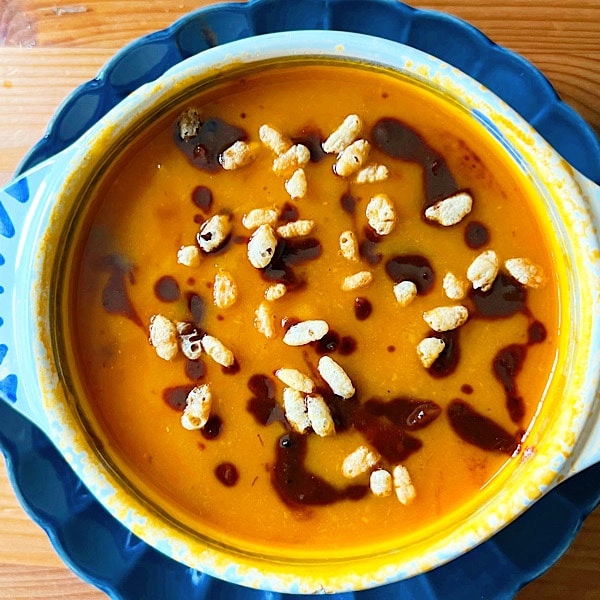
Looks like it’s time to harvest the basil in my container garden before the bugs do. This is the first year in Cancale that I’ve actually had a crop of basil worth harvesting. Usually, I just get a few sad stalks that somehow survive the dark (I get very little direct sun around my house), the damp, and the snails. In other words, it’s been a long while since I’ve had a batch of home-grown basil pesto in my fridge.
Ever since the price of pine nuts skyrocketed to 60 euros a kilo (about $35/pound), I’ve been making pesto with less expensive sunflower seeds, which have a similarly mild flavor. (Any nut will work in pesto, of course, but you WILL taste the walnuts or almonds or pistachios in the paste if you use them.) The only issue with the sunflower seeds was that they didn’t blend as well as the pine nuts. So, I tried soaking them. I figured that if soaking seeds and nuts will soften them enough to blend into creamy spreads like cashew cheese, the same technique might work for a pesto. And it did. The result is a luscious batch of pesto that mixes well into pasta, spreads well on roasted fish and keeps well in the fridge (with a layer of olive oil on top) for up to a month.
This recipe offers a range of garlic, cheese and oil to suit your various pesto tastes and needs. More oil will give the pesto a spread-like consistency. More garlic and cheese amp up the flavor but can dilute some of the basil flavor.
(For a vegan version, replace the Parmesan with nutritional yeast.)
Sunflower Seed Pesto
¼ cup (50 g.) raw sunflower seeds
1 to 2 cloves garlic, minced
4 loosely packed cups fresh basil leaves
¼ cup (1 oz/30 g) finely grated Parmesan cheese
1/3 to ½ cup olive oil
1/8 tsp. salt
pinch ground black pepper
Place the sunflower seeds in a small bowl and cover with cold water. Let soak 1 hour. Drain well.
Pulse soaked sunflower seeds and garlic in a food processor until the seeds are finely chopped. (I like to mince my garlic beforehand to make sure it blends into the mixture really well.) Add the basil leaves, and blend until a paste starts to form, scraping down the sides of the food processor bowl once or twice. Add the cheese, and blend to combine. With the food processor motor running, add the olive oil in a steady stream until a smooth, thick, dark green paste forms. Season with salt and pepper.
Spoon the pesto into a lidded jar, smooth the top and wipe down the sides. Pour a ¼-inch (1 cm) layer of olive oil over top to keep the pesto bright green and mold-free while refrigerated.
To use: Pour the oil off the top of the pesto into a small bowl. Use pesto as desired, then smooth the top once more and cover with reserved oil. Makes about ¾ cup



I wish I’d seen this before I used walnuts with the last of my basil this year. Next year!!
I may never go back to pine nuts again…